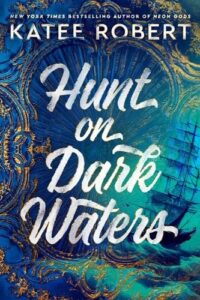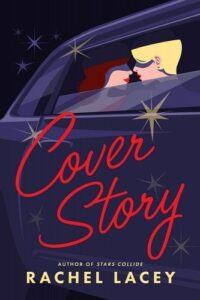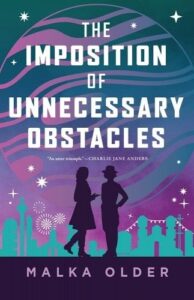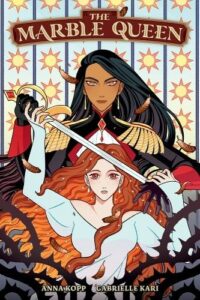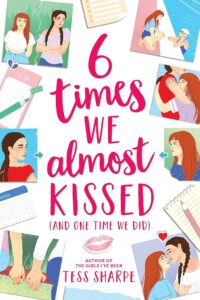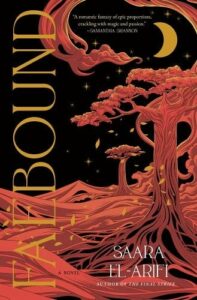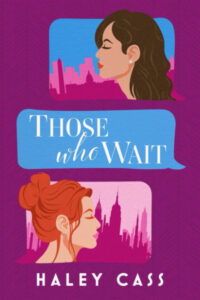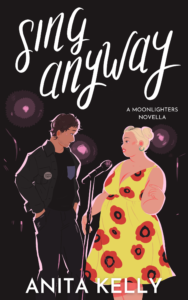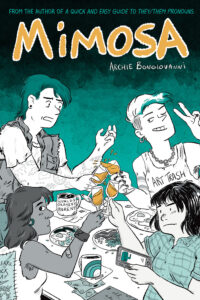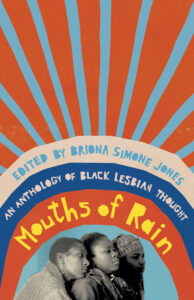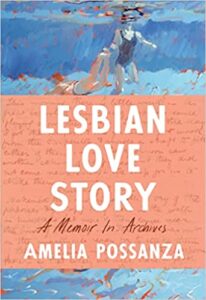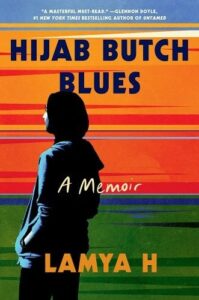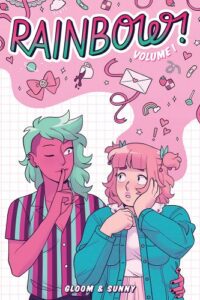Buy this from Bookshop.org to support local bookstores and the Lesbrary!
I have been slow to jump on board the romantasy bandwagon, partly because I am particular when it comes to romances, and partly because the subgenre has been pretty cis and straight. When I heard that Tiktok favourite Katee Robert had a new fantasy pirate romance with a bisexual woman main character, it seemed like the perfect place to start. Although I ended up with some complaints, I’ll admit that I do see the appeal of this subgenre, and I plan to pick up the sequel.
Evelyn is a witch in a situationship with the vampire Lizzie. She knows it’s a bad idea, because Lizzie is heartless and extremely powerful…but the sex is good. And it’s a nice distraction from her grief over her grandmother. When things go south with their arrangement, she decides to take a parting gift in the form of some jewels, hopping through a portal to escape Lizzie. That’s when she meets Bowen, the captain of a Cŵn Annwn ship, who tells her she has a choice: join the crew or be killed. Evelyn agrees for now, but is looking for an escape route. Meanwhile, the taciturn, “paladin” Bowen and snarky pickpocket Evelyn can’t ignore the heat between them.
So yes, this is primarily an M/F romance, and predictably, I was most interested in the beginning chapters with Lizzie. Still, I had fun reading this. It’s exactly what I would expect from a romantasy book: some fantasy adventure and worldbuilding, but with a focus on the relationship—and plenty of steamy sex scenes. I also think this is the first time I’ve seen a romance heroine described as having a soft stomach, large thighs, and small breasts. And she knows she’s hot. So that’s fun.
A small thing I appreciated was that this is a queernorm world: there doesn’t seem to be any discrimination against queer or trans people in this world. There are also several nonbinary side characters, including ones who use they/them pronouns and ones that use neo pronouns. Since this book takes place in a world where people come through portals from very different worlds and cultures, it makes sense that they’d all be different and come with their own understandings of gender and pronouns.
I will say that the writing style wasn’t this book’s strongest feature. It felt a little too simple, and the dialogue was clunky at times. I also quickly got tired of the main characters spending every page describing how hot the other one is.
The plot was serviceable: Bowen has been fiercely loyal to the Cŵn Annwn and is having to reconsider whether they’re actually the bad guys, which takes a lot of unlearning. He was taken in by them as a kid and has no memory of the time before that—which felt like it would play a bigger part in the plot, but doesn’t really. I wasn’t deeply invested in this world, but I also wasn’t bored with it.
Vague spoilers in this paragraph: as I mentioned, I found Lizzie to be the most interesting part of this book. She’s the protagonist of the sequel, so although she can seem villainous at times, the author is also careful to include some glimpses of her softer side—she might be a powerful, killer vampire, but she can’t be completely irredeemable. That makes her an intriguing figure, especially in the last section of the book. She’s both the big bad that Evelyn is running from and a character that needs to be sympathetic enough to star in her own story. The tension between these two roles was interesting to read.
Overall, this was a fun, sometimes silly read. I feel like it’s worth mentioning that this was my first Katee Robert book, and it has a much lower average rating than her other books, like the Dark Olympus series. Her fans mostly seem to find this one disappointing, so I’m not sure that I should recommend it as a starting point for her books. Still, although I had my issues with it, I am looking forward to reading Lizzie’s story in the sequel (which has a central F/F romance).

